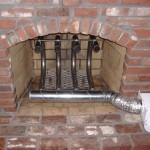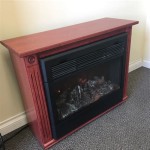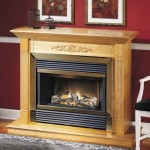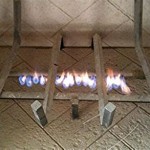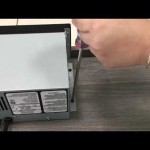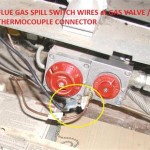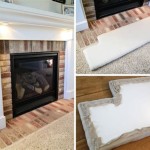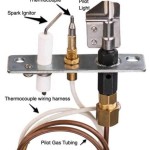Understanding the Fireplace Ash Pan: Functionality, Selection, and Maintenance
The fireplace ash pan is a crucial component of a wood-burning fireplace, designed to facilitate the safe and efficient removal of ashes. Its primary function is to collect the ash that accumulates during combustion, preventing it from piling up in the firebox and potentially causing problems. This article will delve into the functionality of ash pans, the factors to consider when selecting one, and essential maintenance practices to ensure its longevity and optimal performance.
Functionality and Purpose of the Ash Pan
The fireplace ash pan serves a fundamental role in maintaining the cleanliness and efficiency of a wood-burning fireplace. After wood is burned, it leaves behind ash, a powdery residue consisting primarily of inorganic minerals. Without a proper ash collection system, this ash would accumulate in the firebox, reducing the airflow and potentially hindering the combustion process. An excessive buildup of ash can also pose a fire hazard by insulating the firebox and trapping heat, potentially leading to overheating and structural damage.
The ash pan is typically located beneath the grate within the firebox. It is a removable tray or container made of metal, usually steel or cast iron, designed to catch the falling ash. The pan's design allows for easy removal and disposal of the accumulated ash, minimizing the mess and effort involved in cleaning the fireplace.
Furthermore, a properly functioning ash pan contributes to better air quality within the home. By containing the ash within a closed container, it prevents the dispersal of fine ash particles into the air. These particles can be inhaled and may cause respiratory irritation, especially for individuals with allergies or asthma. An effective ash pan system helps to mitigate this risk, creating a healthier indoor environment.
The use of an ash pan also promotes safety. Hot embers can remain in the ash long after the fire has died down. By containing these embers within the pan, the risk of accidental fires is significantly reduced. When disposing of the ash, it is crucial to do so in a safe manner, such as in a metal container away from flammable materials, to prevent the embers from igniting a fire outside the fireplace.
Factors to Consider When Selecting an Ash Pan
Choosing the right ash pan for a fireplace is essential for ensuring its proper functionality and longevity. Several factors must be considered during the selection process, including size, material, design, and compatibility with the fireplace.
Size: The size of the ash pan is a critical consideration. It must be large enough to accommodate the amount of ash produced between cleanings. An undersized pan will require frequent emptying, while an oversized pan may be difficult to remove and handle. The dimensions of the firebox should be carefully measured to determine the appropriate size of the ash pan. Adequate clearance around the pan is also necessary to facilitate easy removal and replacement.
Material: The material of the ash pan plays a significant role in its durability and heat resistance. Steel and cast iron are the most common materials used in ash pan construction. Steel offers good strength and heat resistance, while cast iron provides excellent heat retention and durability. However, cast iron can be more prone to cracking if subjected to sudden temperature changes. Stainless steel is another option, offering excellent corrosion resistance and durability. The choice of material should be based on the intended use and the expected level of heat exposure.
Design: The design of the ash pan can affect its ease of use and effectiveness. Some ash pans feature a handle for easy carrying, while others have a lid to prevent ash from spilling during transport. The shape of the pan should also be considered. A rectangular or square pan is generally easier to fit into the firebox than a round one. The edges of the pan should be smooth and rounded to prevent scratches or injuries during handling.
Compatibility: The ash pan must be compatible with the specific fireplace. Some fireplaces have a built-in ash dump, which is a small opening in the firebox floor that allows ash to be swept into a collection box below. In this case, the ash pan would be placed beneath the ash dump. Other fireplaces do not have an ash dump and require the ash pan to be placed directly beneath the grate. It is essential to ensure that the ash pan fits properly within the firebox and is compatible with the fireplace's design.
Check Ash Pan Dimensions In order to fit your ash-pan, you need to know the exact dimensions of your fireplace. You need to be able to fit it comfortably within the space.
Maintaining the Fireplace Ash Pan
Regular maintenance is essential for ensuring the longevity and optimal performance of the fireplace ash pan. Proper maintenance involves cleaning, inspection, and safe ash disposal practices. Neglecting these tasks can lead to reduced efficiency, increased fire risk, and premature failure of the ash pan.
Cleaning: The ash pan should be cleaned regularly to prevent ash from accumulating excessively. The frequency of cleaning will depend on the frequency of fireplace use and the amount of ash produced. As a general rule, the ash pan should be emptied whenever it is about two-thirds full. To clean the ash pan, carefully remove it from the fireplace and empty the ash into a metal container with a tight-fitting lid. Ensure the ashes are completely cool before disposal, to prevent any ignition hazards. Water can be used, but ensure all parts are dry before returning the ash pan to the fireplace
Inspection: The ash pan should be inspected regularly for signs of damage or wear. Check for cracks, rust, or warping. These issues can compromise the integrity of the ash pan and increase the risk of ash spillage or fire. If any damage is detected, the ash pan should be repaired or replaced promptly. The area around the ash dump and the bottom of the firebox should also be inspected for any signs of ash buildup or damage.
Safe Ash Disposal: Proper ash disposal is crucial for preventing fires and protecting the environment. Hot embers can remain in the ash for several days after the fire has died down. Therefore, it is essential to handle the ash with care and dispose of it in a safe manner. The ash should be placed in a metal container with a tight-fitting lid and stored away from flammable materials. Never dispose of hot ash in a plastic container or near combustible materials such as wood or paper. The ash can be used as a soil amendment in gardens, as it contains valuable minerals. However, it should be applied sparingly, as it can increase the soil's alkalinity. Always wear gloves and a dust mask when handling ash to avoid skin irritation and respiratory problems.
Preventing Corrosion Rust and corrosion can be issues which affect the longevity of your ash pan. Ensuring your ash pan is clean and dry can help to prevent this.
By understanding the functionality of the ash pan, carefully selecting the right model for a fireplace, and adhering to regular maintenance practices, homeowners can ensure the safe and efficient operation of their wood-burning fireplaces. These steps contribute to a cleaner, healthier, and safer home environment.

Fireplace Ash Pan 380mm Tray Solid Steel Heavy Duty Made In

Do I Need An Ash Pan In My Fireplace Charles Nijman

Replacement Ashpan For Gallery Fireplaces Cast

Adjustable Fireplace Tray Ash Pan For Collection Galvanized Steel Silver

Fireplace Tray Fire Place Pan Ember Holder Included Nuts And Bolts With Handles Ash For Grate Com

Fire Grate Ash Pan Buschbeck Usa Masonry Outdoor Fireplace Bbq Grill

Iron Black Brush And Pan Set Fireside Fireplace Metalwork Singapore

Minuteman International 17 In L Grey Steel Versatile Rectangular Ash Pan Gt 03 The Home Depot

Ash Pans Bottom Grates Now Available Victorian Fireplace

16 Grate Fireplace Set Fret Front Ash Pan Tool Black Fireside Fire 3034
Related Posts

